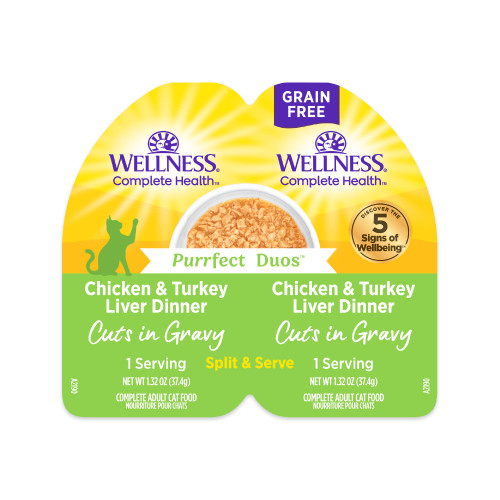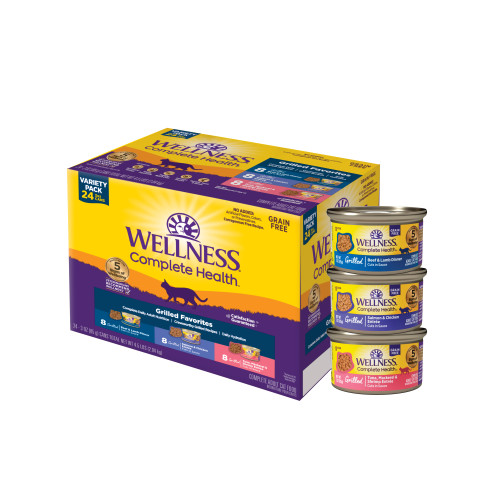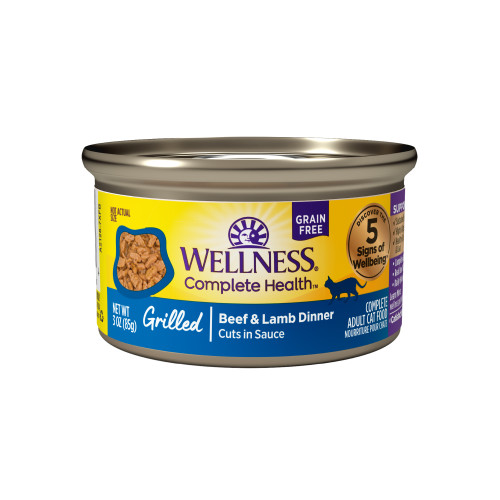September 29, 2020
Changing Our Cat’s Food: A Guide for Transitioning Between Dry and Wet Foods
Cat parents love their fur babies, but they know how temperamental they can be. Cats like to have things their way, and they will absolutely let you know when they are unhappy. This can be especially true when it comes to food. They know what they like, and they don’t like a change in routine when it comes to feeding. So, how can we switch our cat’s food without disrupting the entire home? Check out the guide below to help make your cat’s diet transition a breeze.
Transitioning from Wet to Dry Cat Food
Changing cat food can be tricky, but it doesn’t have to be a huge disruption. The goal is to ease your pet into the change, especially if they are picky, older in age or have known health issues.
The trouble with transitioning from wet cat food to dry cat food is because of a few things. Cats like the consistency of wet food, along with the generally higher fat content. It tastes better in the same way we might crave a juicy cheeseburger or a fried option. Here are a few ways to make the transition as seamless as possible while keeping your pet happy and safe:
The Transition
- First, choose a dry food formula that is similar to the wet food formula they are currently enjoying. Some formulas will come in a dry option, but if they don’t, then pick one that has the same protein profile to it.
- Start by adding a small portion of new food into your cat’s food dish. It works best if you put the new dry food at the bottom of the bowl and or mix it directly into the wet food so they can’t eat around it.
- Slowly change the percentage of old/new food until you completely transition away from wet food. Do this over the course of 7-10 days. Start with no more than 25% new food and slowly increase by 10% each day while reducing the old food. The transition could look something like this:
- Day 1: 75% old/25% new
- Day 2: 65% old/35% new
- Day 3: 50% old/50% new
- Day 4: 40% old/60% new
- Day 5: 30% old/70% new
- Day 6: 20% old/80% new
- Day 7: 10% old/90% new
- Day 8: Full transition (based on your cat’s reaction to each day’s change)
Tips/tricks
- Sprinkle water on the dry food to help soften the hard kibble. This can let your cat get used to a softer texture while keeping the flavor exactly the same. Once your cat is successfully eating a soft texture than slowly reduce the amount of water you add until your not adding any.
- Add a food topper like CORE Simply Shreds to your cat’s dry food. Your cat will love the taste and texture and they’ll receive key nutrients for a balanced diet. You can also mix the topper with the dry food to ensure they eat the whole bowl.
- Sometimes hand-feeding your cat a few pieces of dry food can help with the transition. Use the dry food as a treat or snack to get them accustomed to the taste and texture before switching over.
It may not be a perfect transition, but your cat won’t go hungry. Give them time to accept the change by helping them ease into the shift slowly and lovingly.
Transitioning from Dry Cat Food to Wet Cat Food
Wet cat food is a great option for kittens, adult cats and senior cats as it has a high water content to aid in hydration, and is often lower in carbohydrates. Use the guide below to help make the transition from dry food to wet food easy for you and your cat.
The Transition
- First, choose a wet food formula that is similar to the dry food formula they are currently enjoying. Some formulas will come in a wet option, but if they don’t, then pick one that has the same protein profile to it. Wellness wet cat food comes in a variety of textures and proteins to find the purrfect fit for even the most discrimitory of felines.
- Depending on health issues, you may want to transition over the period of a week or so the same way you would with dry food to avoid gastrointestinal issues. Do this over the course of 7-10 days. Start with no more than 25% new food and slowly increase by 10% each day while reducing the old food. The transition could look something like this:
- Day 1: 75% old/25% new
- Day 2: 65% old/35% new
- Day 3: 50% old/50% new
- Day 4: 40% old/60% new
- Day 5: 30% old/70% new
- Day 6: 20% old/80% new
- Day 7: 10% old/90% new
- Day 8: Full transition (based on your pup’s reaction to each day’s change)
Cats typically like wet food over dry, so the transitioning in this direction is usually easier, however, wet food can be high in fat, so be sure to pick the right option for your cat’s age, activity level and health.
Reminders About Transitioning Diets
We may want to make this transition as quick as possible, but there are a few things to remember when changing cat food. Just like when we change our diets, cats can see side effects from new food. If you make the change too quickly, your cat might have diarrhea, reduced appetite and even vomiting. If you have an older cat, it may take up to two weeks to see results in the transition. Take it slow, ease them in, and watch for any changed behaviors that could signal an issue.
While we are our cat’s keeper, our vets have an abundance of knowledge when it comes to animals. Check in with them about possible diet options and work with them to ensure your cat is transitioning foods in a safe way.
Click below to get a $5 coupon off any Wellness ® dry dog or dry cat food mailed to your home





